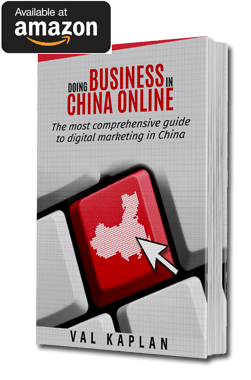Sina Weibo is becoming one of the most important marketing channels in China. Approximately, half of Chinese internet users are on Weibo and this audience is also quite active and willing to connect and engage with brands.
Large number of Chinese companies have already established their presence on this platform while increasing number of global brands are quickly moving there as well.
Clearly, marketing in social media requires patience and persistence, it’s never a one-off project but a consistent effort. Setting up an account and letting it stay static will never bring any results, the key is keeping adding engaging content. This is, perhaps, the hardest part of social media marketing in general.
Just like with pretty much everything else, drawing out a plan and setting up goals will make this process easier, less overwhelming and more manageable. Here are the 5 steps for marketing on Weibo:
Step 1: Setting up Weibo account
Weibo allows a certain degree of customization within its existing structure. You can place your company’s logo, setup your own background, set your tags and keywords and write a short description.
It’s always a good idea to customize your Weibo sub-domain but you may also find out that your company name has already been taken by someone else. In this case, find an alternative name – it doesn’t really matter that much but make sure that your name is memorable and can be typed in easily.
Consider account verification which is a fairly simple process. This would improve trustworthiness of your page and prevent possible brand hijacking.
Step 2: Putting together the editorial calendar
You have to decide who and when will post on your Weibo and what topics you are going to cover. The best way is to write a plan in a calendar format where you can clearly indicate when the posts get published and who is responsible for the content.
It’s easy to overestimate your capacity to produce valuable content, so to avoid running out of material to write about, set a conservative goal at the beginning. You can always decide to increase the frequency later on.
Some surveys show that the best time to publish is around 5PM in mid-week or on weekends.
Step 3: Publishing content on Weibo
Once your editorial calendar is finalized, start posting your content based on your schedule. You can also consider to automate this process with some software available on the market which allows you to schedule your pre-written posts and even publish it simultaneously on different platforms, such as Tancent Weibo, Sohu Weibo and NetEase Weibo.
Obviously, what you publish is the most important part of your strategy. Good content should include a lot of visuals, videos are the best. If you want to be relevant to the news and current event, automating your content publishing might not be a good idea.
Avoid boring posts and those that don’t really say anything. The content that Chinese like to share the most are jokes, so, if it’s at all relevant to your message, try not to be too serious…
Step 4: Promote your Weibo
Promoting your Weibo is, perhaps, the second most time consuming part of your marketing after content creation. It’s easy to get frustrated with the lack of response and few followers, so persitence is important.
First of all, you have to make sure that you include your Weibo information in all of your other marketing assets. Brochures, handouts. name cards, souvenirs all should have your Weibo link and where space allows, use QR code for it as well.
Include your Weibo link in all of your online material as well, such as main company website, press releases, newsletters etc.
Another good strategy is getting involved with other Weibo activities, such as interviews and social games. Commenting and retweeting relevant posts will also increase your exposure to larger audience. Go to groups and engage with people who mention you. Those are just a few tips.
Step 5: Measure your results
Unfortunately, number of followers doesn’t really say much about the effectiveness of your Weibo marketing campaign. Depending on your original goals you have to set the targets and see if you are getting any closer. If your goal was improving brand awareness, then the best measure is the number of comments are reposts.
If you expect to increase sales directly as a result of marketing on Weibo than you should track lead generation or sales conversion rates.
You also might want to look at 3rd party software that pulls together this type of data for you and presents it in the way you need it.
Step 6: Review and adjust
After a few months of running your Weibo you will start getting some statistics as mentioned in the previous step. You will certainly see some peaks of activities while at other times it might look like a wasteland. The key is to identify when the engagement peaks and what causes it. Once you identify what type of content generates more reposts and comments stick to that topic.
Take a closer look at your audience, where they are coming from, what is their demographics? How do they correlate with your target audience? Should you tweak your message to reach people you really want to engage?
More data comes in, clearer picture will be emerging allowing you to continually improve the effectiveness of your Weibo marketing campaign.



